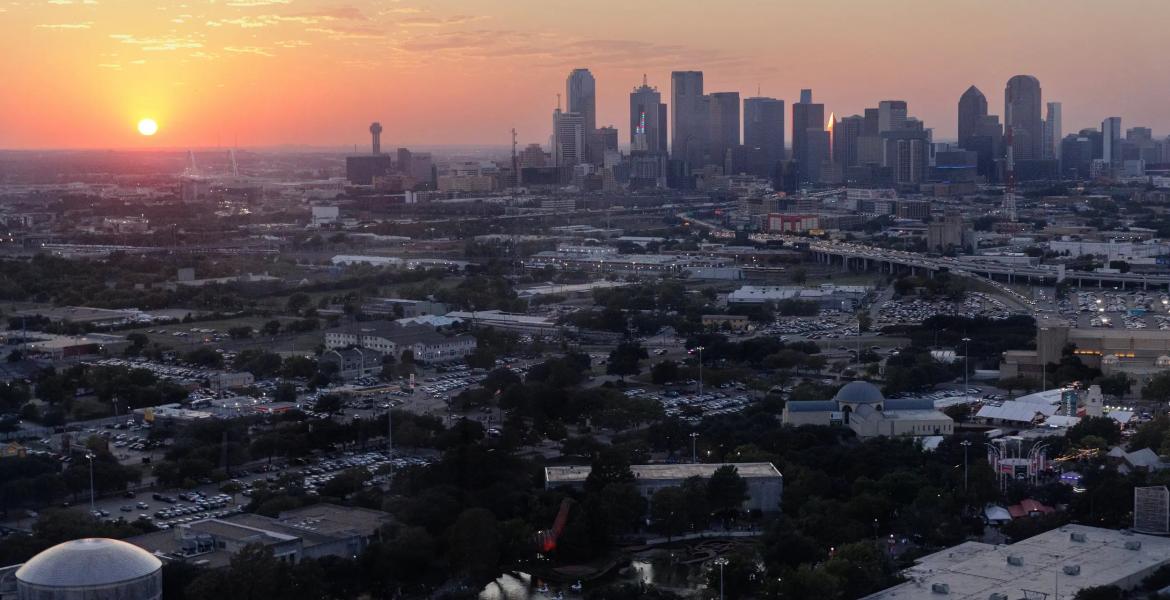AUSTIN – Pursuant to a court order by the 114th District Court of Smith County, Texas, Gregory Russeau is scheduled for execution after 6 p.m. on June 18, 2015.
In 2002, a Smith County jury found Russeau guilty of capital murder for bludgeoning 75-year-old James Syvertson to death with a hammer at Syvertson’s automobile repair garage in Tyler, Texas. Russeau’s first death sentence was overturned on appeal, but a jury resentenced him to death in 2007.
Facts of the Crime
In its first opinion on direct appeal, the Texas Court of Criminal Appeals provided the following summary of the facts:
On May 30, 2001, 75-year-old James Syvertson was murdered at his Tyler auto repair garage. Syvertson’s widow testified at trial that he left for work at approximately 7:00 a.m. on the day in question and that she spoke with him on the telephone sometime that morning. She further testified that he ate lunch at a “Luby’s” cafeteria every day and that he usually left the garage at about 10:45 a.m. in order to “beat the crowd.” The manager of the “Luby’s” cafeteria testified that he saw Syvertson at approximately 11:00 a.m. on the day in question.
Mrs. Syvertson testified that she went to Syvertson’s garage sometime between 11:00 a.m. and noon. At that time, she noticed Syvertson’s gray Chevrolet Corsica parked outside. The doors to the garage were locked. She knocked on the doors but got no answer, so she left.
Katie Jordan testified that she contacted Syvertson by telephone sometime between 11:30 and 11:45 a.m. Syvertson told her that he could do some repair work for her employee, Bob Bruner, if he brought his car to the garage right away. When Bruner arrived at the garage between 12:20 and 12:30 p.m., the gray Corsica was parked outside, a light was on inside the garage, and a large fan was running on the side of the garage, but the doors to the garage were locked. Bruner knocked but got no answer. Bruner parked his car outside the garage and left. At 1:30 p.m., Bruner called Syvertson from his cell phone but got no answer. Bruner drove by the garage at about 2:00 p.m. The gray Corsica was still parked outside, and the light and fan were still on. Bruner returned to the garage at about 5:30 p.m. The gray Corsica was still parked outside, the light and fan were still on, and the garage doors were locked. Bruner knocked on the garage doors again but got no answer.
Mrs. Syvertson testified that she went back to the garage sometime in the afternoon and found the doors still locked. She knocked but got no answer. She went to get her daughter, who had a key to the garage. When they returned at 7:00 p.m., the gray Corsica was gone. Once inside the garage, they found Syvertson’s body lying face down in a pool of blood next to a white Chevrolet Corsica. (Apparently, Syvertson was working on the white Corsica when he was murdered.) Rigor mortis had set in, and it appeared that Syvertson had been hit in the head several times with a hard object. The wallet he usually carried and the keys he usually kept clipped to his belt loop were both missing, and one of his pants pockets had been turned inside out. Several valuable tools were also missing from the garage. A bolt on an office door was broken and hanging by a single screw. Police testified that the door “looked like it had been kicked in.”
The medical examiner who performed the autopsy on Syvertson’s body testified that the manner of death was homicide and the cause of death was blunt force head injuries. Syvertson suffered multiple abrasions and lacerations to the front and back of his head. Many of the abrasions had a crescent or half-moon shape, and one had a circular outline. The blows were delivered with a blunt object that had a round, flat surface and was either fairly heavy or used with a great deal of force. The medical examiner estimated that the time of death was between 11:00 a.m. and 2:00 p.m.
Several witnesses testified that they saw [Russeau] in the vicinity of the garage on the day of the murder. Robert Menefee testified that [Russeau] came to his house “sometime after lunch” and inquired about buying some illicit drugs. Terry Seaton testified that [Russeau] arrived at his house on foot at 3:00 p.m. [Russeau] told Seaton that he had been getting “high” on crack cocaine and asked Seaton whether he would sell him some crack. Seaton refused to sell drugs to [Russeau] but gave [Russeau] a small amount of change and drove him to “some duplexes” nearby.
At about 7:30 p.m., [Russeau] arrived at the home of his friend Lisa Tucker, who was about to leave on a date with her boyfriend, Marcus Tilley. [Russeau] told Tucker and Tilley that his car had broken down, and he asked for a ride to his mother’s house. On the way, [Russeau] pointed to a gray Corsica parked behind a house and told them that it was his wife’s car and that it had stalled. As they approached the intersection near Syvertson’s garage, they saw police, an ambulance, and crime scene tape. Tucker and Tilley wanted to drive by the garage to see what was going on, but [Russeau] asked that they continue driving. Tilley decided to turn and drive by the garage. Before they reached [Russeau]’s mother’s house, [Russeau] had Tilley drop him off “at a house on Gaston Street.” Menefee’s residence was on Gaston Street.
[Russeau] visited Menefee’s residence again that evening. They talked briefly, and [Russeau] left on foot. Between 9:00 and 10:00 p.m., [Russeau] returned to Seaton’s house and spoke to him for a few minutes, then continued down the alley on foot.
Lashundra Hall testified that she saw [Russeau] smoking crack cocaine in Longview sometime in the afternoon or evening. She saw him again at about 3:20 a.m. the next morning, and [Russeau] was driving a gray Corsica. He asked her where he could “get more crack and rent the car out for crack.” She got into the car, but they were stopped by Longview police about ten minutes later. Police discovered title and registration documents to the gray Corsica in [Russeau]’s pocket. Syvertson’s keys were in the ignition.
Fingerprint and DNA evidence recovered from the garage connected [Russeau] to the crime. [Russeau]’s fingerprints and a palm print were found on the white Corsica next to Syvertson’s body. Syvertson’s son testified that a hammer leaning against a plastic bottle on a shelf near the body was out of place. Hairs found on the bottle were consistent with [Russeau]’s DNA.
Witnesses testified that a man named Ray Charles Berry was in the vicinity of Syvertson’s garage at 1:30 p.m. on the day of the murder. Berry, who lived in the neighborhood, was seen standing near Syvertson’s garage at 1:30 p.m. eating lunch out of a brown paper sack. No evidence linked Berry to the crime; Berry’s fingerprints did not match any of those found on the white Corsica. In a hearing outside the presence of the jury, Berry invoked his Fifth Amendment right against self-incrimination.
Russeau v. State, 171 S.W.3d 871, 875-77 (Tex. Crim. App. 2005).
Prior Criminal History
Following a remand from the Court of Criminal Appeals, Russeau received a second punishment hearing. The Court of Criminal Appeals provided the following summary of the facts presented at that hearing:
… [T]he State presented 62 witnesses and numerous exhibits [source], and [Russeau] presented one witness [source] The State’s evidence was to the following effect: (1) On April 4, 1987, when [Russeau] was seventeen years old, he committed the felony offense of attempted burglary of a building. (2) On February 11, 1988, [Russeau] committed the felony offense of burglary of a habitation. (3) On May 13, 1988, [Russeau] committed felony theft. (4) On May 16, 1988, [Russeau] committed the felony offense of burglary of a habitation. (5) On May 17, 1988, [Russeau] committed the felony offense of burglary of a habitation. (6) On May 23, 1988, [Russeau] committed the felony offense of burglary of a habitation. (7) On June 27, 1988, [Russeau] committed the felony offense of engaging in organized criminal activity. (8) On May 6, 1997, [Russeau] committed misdemeanor theft. (9) On December 12, 1997, [Russeau] committed the felony offense of possession of a controlled substance. (10) On September 14, 2000, [Russeau] committed the misdemeanor offense of burglary of a vehicle. (11) On May 30, 2001, [Russeau] committed capital murder by burglarizing 75-year-old James Syvertson’s auto repair shop in Tyler and then killing him by crushing his skull with a blunt instrument. (12) At the time he killed Syvertson, [Russeau] was a chronic abuser of “crack” cocaine. (13) While incarcerated in the Smith County Jail and in the Texas prison system at various times in the 1990’s and 2000’s, [Russeau] committed numerous serious infractions of the rules of conduct.
In addition to the foregoing, the State presented the testimony of two psychiatrists (Drs. Tynus McNeel and Edward Gripon) and one psychologist (Dr. Sue Stone). All three testified that the evaluation of a criminal defendant’s future dangerousness was within their professional training and expertise. All three also testified that, in light of [Russeau]’s criminal and prison records and the extreme nature of the instant offense, their professional opinion was that he would probably be a future danger.
Russeau v. State, 291 S.W.3d 426, 432-33 (Tex. Crim. App. 2009).
Procedural History
On August 15, 2001, a Smith County grand jury indicted Russeau for the offense of capital murder for killing of Syvertson.
On October 7, 2002, a jury convicted Russeau of capital murder. On October 10, 2002, the jury recommended capital punishment. On the same day, the trial court sentenced Russeau to death.
On June 29, 2005, the Court of Criminal Appeals affirmed Russeau’s conviction but remanded for a new punishment hearing. The State of Texas and Russeau both petitioned the Supreme Court for a writ of certiorari, but the Supreme Court denied review on June 30, 2006.
Following new proceedings, Russeau was resentenced to death on April 20, 2007.
On July 1, 2009, the Court of Criminal Appeals affirmed Russeau’s death sentence.
Russeau filed two state applications for a post-conviction writ of habeas corpus. The first application, which challenged Russeau’s conviction, was filed on October 15, 2004. The Court of Criminal Appeals denied relief on February 16, 2011.
The second application, which raised issues relating to the second punishment trial, was filed on May 21, 2009. The Court of Criminal Appeals denied relief on August 25, 2010.
On August 24, 2011, Russeau appealed his conviction and sentence to the Eastern District of Texas, Tyler Division, with a petition for a federal writ of habeas corpus (which was subsequently amended).
The district court denied Russeau’s petition for a federal writ of habeas corpus on December 26, 2012, but issued a certificate of appealability on January 31, 2013.
Russeau appealed the district court’s decision to the United States Court of Appeals for the Fifth Circuit. On March 17, 2014, the Fifth Circuit affirmed the federal district court’s denial of relief.
Russeau then filed a petition for writ of certiorari with the Supreme Court. The Supreme Court denied certiorari review on October 6, 2014.
On March 8, 2015, the trial court ordered Russeau’s execution to take place on June 8, 2015.
Miscellaneous
For additional information and statistics, please access the Texas Department of Criminal Justice website. www.tdcj.state.tx.us.
Subscribe to the LIVE! Daily
Required






Post a comment to this article here: